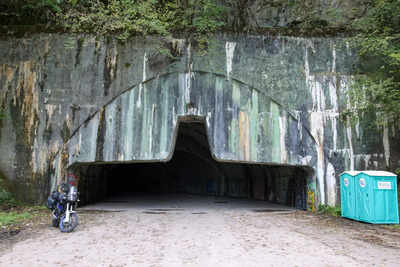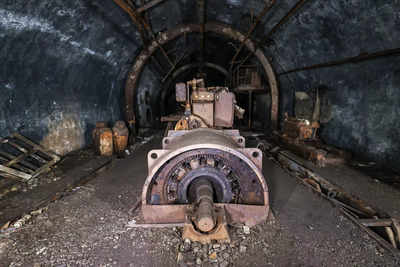- News
- World News
- Europe News
- Zeljava Airbase: A relic of the cold war
Trending
This story is from October 18, 2023
Zeljava Airbase: A relic of the cold war
Zeljava airbase is situated between the borderlands of Bosnia and Croatia. Constructed during the 1960s under a shroud of secrecy, this underground complex was purpose-built to withstand a nuclear strike.
The airbase stands as a testament to the intricate geopolitical landscape of its time, nestled in what was once Yugoslavia—a socialist federation treading a fine line between Moscow and Washington during the Cold War.
With its self-reliant power, water purification, and ventilation systems, Zeljava was a marvel of military and technological engineering.
The Underground Behemoth
A Testament to Technological Prowess
Spanning both Croatian and Bosnian territories
Destruction Amidst Conflict
The wars that erupted in the wake of Yugoslavia's dissolution during the 1990s inflicted significant damage upon the facility. The remnants of the Yugoslav army resorted to powerful explosives, resulting in the near-complete destruction of the base. Only the tunnels and structural walls managed to withstand the devastation.
From Abandonment to Tourist Attraction
Following its abandonment, Zeljava languished in a state of disrepair, yet it began to pique the interest of intrepid tourists eager to explore relics from the communist era. However, the base's fortunes took a turn in 2016 with the release of a Slovenian mockumentary titled "Houston, We Have a Problem!" This film catapulted the base into the spotlight, and since then, it has been attracting more than 150,000 visitors annually.
Local authorities have now recognized its untapped potential and are working to entice tourists from the nearby Plitvice Lakes national park. The site has even played host to car races, fueling the belief that this expansive location could be repurposed as a data center, an event space, or perhaps even a Cold War museum.
(With inputs from agencies)
The airbase stands as a testament to the intricate geopolitical landscape of its time, nestled in what was once Yugoslavia—a socialist federation treading a fine line between Moscow and Washington during the Cold War.
With its self-reliant power, water purification, and ventilation systems, Zeljava was a marvel of military and technological engineering.
The Underground Behemoth
In its prime, this marvel had the capacity to house almost 60 MiG-21 aircraft. Its intricate 2.2-mile network of tunnels also accommodated command centers, offices, and dormitories. The 100-ton retractable concrete doors at its entrances, with visible metal reinforcements, serve as lasting reminders of its formidable past.
A Testament to Technological Prowess
Spanning both Croatian and Bosnian territories
, Zeljava was equipped with cutting-edge technology for its time. Former pilot Mirsad Fazlic, who worked at the base in the 1980s, attests, "It was the best in both military and civilian technology at the time."
Destruction Amidst Conflict
The wars that erupted in the wake of Yugoslavia's dissolution during the 1990s inflicted significant damage upon the facility. The remnants of the Yugoslav army resorted to powerful explosives, resulting in the near-complete destruction of the base. Only the tunnels and structural walls managed to withstand the devastation.
From Abandonment to Tourist Attraction
Following its abandonment, Zeljava languished in a state of disrepair, yet it began to pique the interest of intrepid tourists eager to explore relics from the communist era. However, the base's fortunes took a turn in 2016 with the release of a Slovenian mockumentary titled "Houston, We Have a Problem!" This film catapulted the base into the spotlight, and since then, it has been attracting more than 150,000 visitors annually.
Local authorities have now recognized its untapped potential and are working to entice tourists from the nearby Plitvice Lakes national park. The site has even played host to car races, fueling the belief that this expansive location could be repurposed as a data center, an event space, or perhaps even a Cold War museum.
(With inputs from agencies)
End of Article
FOLLOW US ON SOCIAL MEDIA












